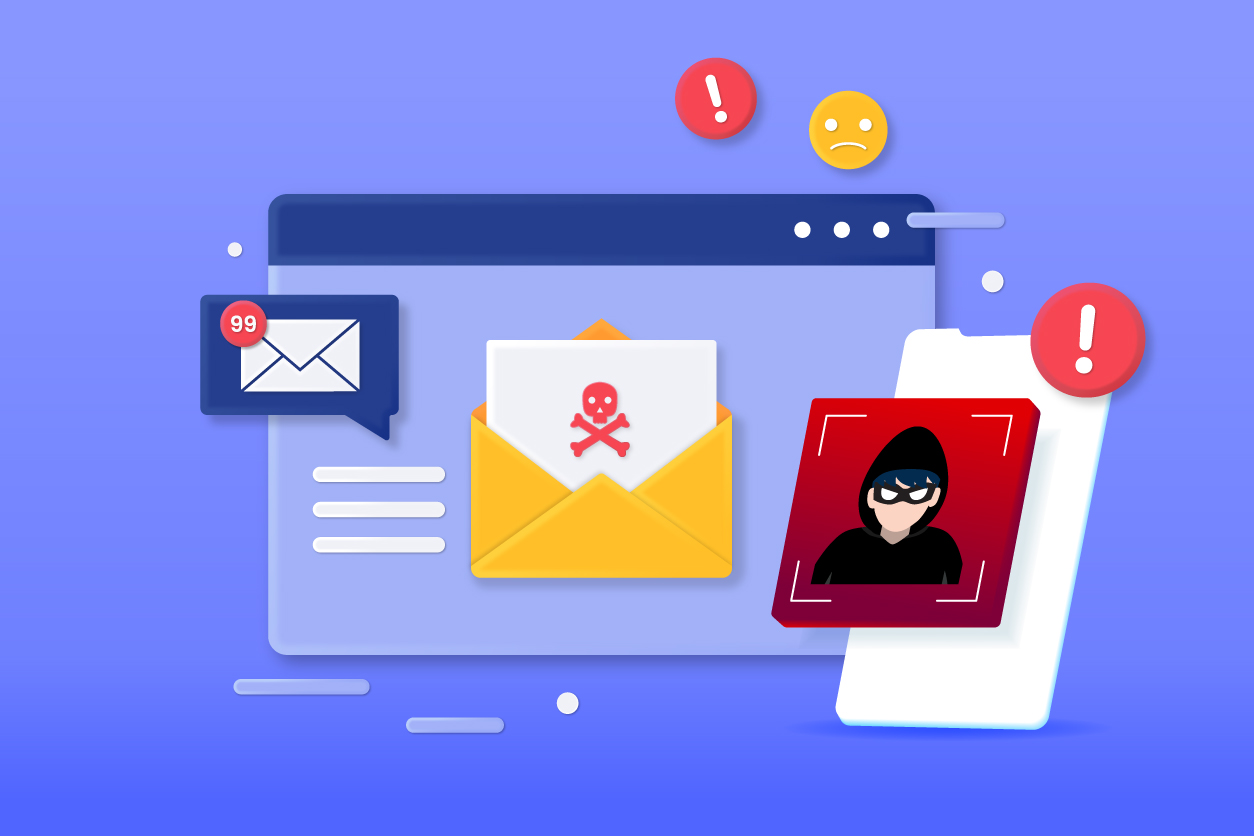Not all of us are aware that once we create an account online, we are technically putting our personal information and our identity out there. Nor do most people realize that once we share a photo or any of our personal information online, the Internet never forgets. Even if we don't share photos or personal information publicly, there is still chance of data compromise if your account is breached.
Hackers can be frighteningly crafty, not only in terms of exploiting vulnerabilities in systems and networks but also exploiting vulnerabilities in humans.
Year by year, cybercriminals find ways to refine their use of social engineering. Cybercriminals focus on human interaction over automated exploits to install malware, breach sensitive data, initiate fraudulent transactions, and other malicious activities.
Losing all your information after a system or computer hack can be devastating. It’s always best to manage our risks online. But what are the risks? After all, identifying the risk is the first step to combatting them.
Here are some of the top factors which cybercriminals and hackers target to access your online identity, data, systems, and even money; and what you can do to protect it.
E-mails
If you deal with clients and customers daily, then you know that having an email to communicate with them is common practice, if not a requirement. When dealing with clients through emails, it is common to send or receive critical data and information, such as personally identifiable information, or attachments that contain important data from their company or yours.
However, hackers are known to target emails in phishing scams and business email compromise (BEC) scams. In such cases, hackers can get hold of the critical data enclosed in the email if they are not encrypted or were sent through an unsecured network.
As mentioned earlier, human vulnerability is as much part of the attack as fancy hacking technology. Hackers also use psychology to manipulate users into doing something to their advantage. This often involves things like transferring money to their accounts under the guise that they are the CEO or CFO of a particular company.
To an unsuspecting employee, they will hurriedly do the requested wire transfer while ignoring usual practices and approvals because “the CEO said so.” But after doing the wire transfer, they will soon realize the person they were communicating with was not their CEO but a cybercriminal.
Unlike a system software that can detect threats through an array of codes and system upgrades, human beings have no such thing to fall back on. The secret weapon of malicious social engineering is human nature and emotion, and it relies heavily upon the two.
Persistent threat actors use social engineering and human vulnerability to gain access to sensitive data and information, of both users and organizations. Threat actors use various tactics to evade this objective thinking— everything from targeting our emotions to limiting our time to think critically through deploying a sense of urgency.
Being at the frontline of security, we play a big part in ensuring that our companies or organizations are protected. One of the ways you can combat cyberthreats and phishing scams is by encrypting your emails and digitally signing them when necessary.
Digital Identities
What is the real impact of unsecured digital identities? What are the challenges and costs facing organizations in protecting them? Securing digital identities involves managing cryptographic keys and digital certificates. It is critical for IT teams and certificate authorities (CAs) to ensure credibility and security are maintained
Managing a multitude of certificates, especially for large-scale corporations and enterprises, can be challenging. One of the impacts of inefficient certificate management includes outages due to expired certificates. The certificate is there and valid, but they have expiration dates and companies need to know that it is just as important to monitor them as much as installing them.
It is critical for your company to be familiar with these so you can plan a strategy for the protection of your digital identities.
One of the effective ways to do this is by having a certificate management platform that lets you streamline, control, monitor, and manage your certificates. There are certificate management platforms that let you automate the issuance and renewal of your company’s digital certificates to avoid the consequences of expired certificates.
Websites
So you’ve secured your wireless connections, digital identities, and emails. What about your websites and servers? What are the risks for websites owners when they don’t have any security protocols in place?
One important step to take when starting a website to ensure security is having an SSL/TLS Certificate. Why is it important? SSL/TLS certificates protect s your websites from hacking and accessing your customers’ data (given that they input sensitive information on your website such as names, addresses, and bank/credit card information). It is a basic requirement for all websites nowadays. If your company does not have one or has one but has already expired, then browsers will warn all your website visitors that your website’s connection is not private and that attackers might try to steal their information. What website visitors will often see is a warning sign that says “Your connection is not private” with a big “!” warning symbol that is enough to scare a website visitor or a potential client away.
If you don’t want that to happen, opting for an SSL/TLS certificate from a trustworthy CA, or renewing them immediately if you used to have one but they have already expired, would help prevent this.
Security matters
Are you ready to secure your networks? At GlobalSign, we have the right solutions for the protection of your online identities, networks, and communications. Eliminate risks and increase security through our trusted identity and security solutions. Talk to our product experts today by clicking here.
To learn more, you may visit our website here.
For more blog updates, click here.







